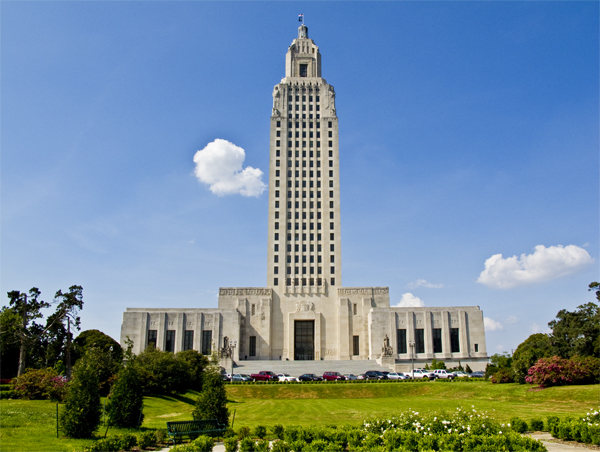Louisiana has failed to provide adequate public information about taxpayer money received through the federal Coronavirus Relief Fund, a new report from Good Jobs First asserts.
The Coronavirus Relief Fund was a provision in the $2.2 trillion Coronavirus Aid, Relief and Economic Security (CARES) Act of 2020, which sent $118 billion to states to cover COVID-19-related costs through the end of this year. According to the U.S. Treasury, Louisiana received $1.8 billion.
Good Jobs First, a nonpartisan research organization, conducted a review of CRF spending disclosures across all 50 states and the District of Columbia and published the results in “Federal Dollars, States’ Recoveries: How Poorly Most States are Disclosing CARES ACT Spending.”
Louisiana was not alone with respect to transparency concerns, as report authors said only six state governments have provided exemplary spending information on public-facing websites. Louisiana ranked near the bottom of the list.
The state’s CARES Act website, Louisiana CARES, was lauded for accessibility and for including in-state names of funding recipients. The report, however, also said the disclosure site fails to show recipient funding allocations, expenditure categories for recipients and vendor expenses, spending descriptions, and information related to education and health data.
“It’s not enough to know the state’s Health and Human Services Department, for example, got $500 million. Residents need to be able to see how each department spent what it got,” report author Katie Furtado said. “There’s no excuse for disclosure to be so poor in so many places, especially with some states proving that it definitely can be done.”
The accountability report highlighted good and bad transparency examples, while crediting most states with some level of reasonable disclosure. Notably, eight states and the District of Columbia have failed to provide any spending information at all.
Alabama, Georgia and Wyoming were the top-rated states. Alabama’s site contains a “matrix” of disclosures that covers all of the state’s CRF expenses, the report said. Georgia provides spending data that goes beyond CARES Act requirements, and Wyoming hosts individual expenditures that meet every Good Jobs First reporting metric.
New York and Texas were cited as two of the worst transparency states, while receiving $7.5 billion and $11.2 billion, respectively.
“New York’s page is difficult to find and provides no details on expenditures. Texas offers little in the way of detail on its CRF page and instead places what little information it does have on the state’s open data portal website, a place most residents don’t know about and would have trouble finding,” the report said.
Congress and the U.S. Treasury Department gave state leaders, such as Louisiana Gov. John Bel Edwards, broad flexibility for spending CRF funds, the report authors explained. The reason was to enable states and local governments to target specific COVID-19 needs in a timely manner.
Providing adequate information about how the taxpayer funding was used, they added, is important for the public to determine whether the money was spent wisely.
“We’ve seen CRF used on things like stadium turnstiles and upgrades to golf courses, while millions of people are afraid to return to work,” Good Jobs First Executive Director Greg LeRoy said. “Transparency enables residents to track these decisions.”
Despite “poor” CARES Act transparency, the report said states can provide CRF spending information retroactively, as well as disclose any CRF funds that have not yet been spent.
States also can improve transparency efforts, report authors said, with an even larger taxpayer allocation – the $195 billion state-aid provision contained in the American Rescue Plan Act of 2021, known as the Coronavirus State and Local Fiscal Recovery Fund (CSLFRF).
This article was originally posted on Louisiana lacks transparency for COVID relief spending











More Stories
Two south Florida men plead guilty in $35M COVID scam
Pelosi’s home district is a progressive nightmare
Florida ports helping to ensure ‘Grinch doesn’t steal Christmas’